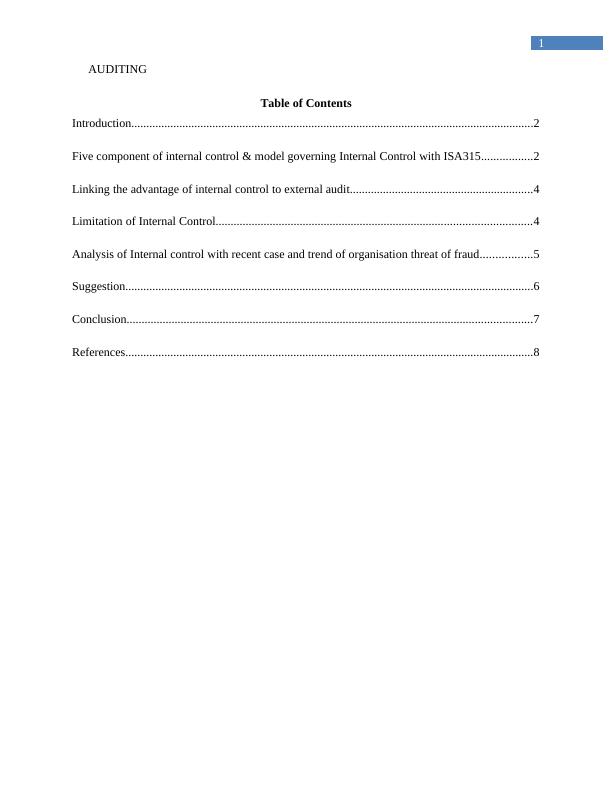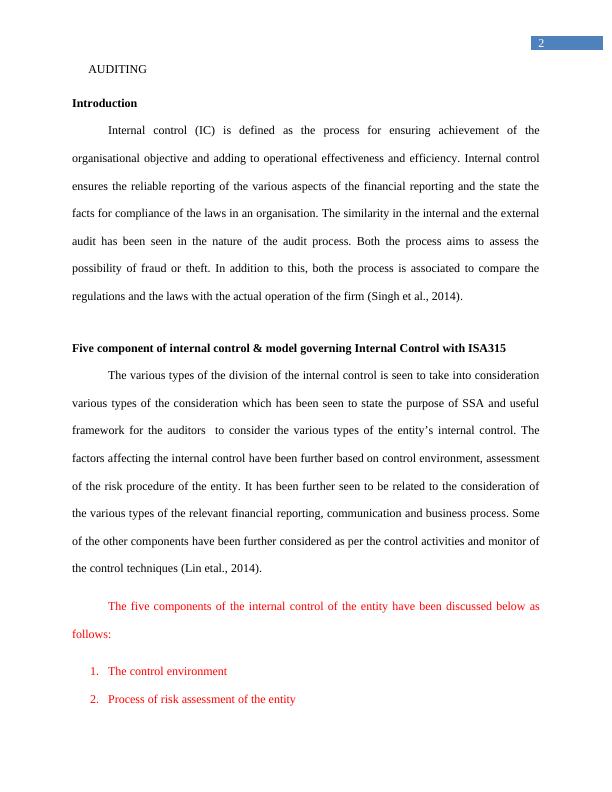Ask a question from expert
Linking the Advantage of Internal Control to External Audit
9 Pages2133 Words136 Views
Added on 2020-04-21
Linking the Advantage of Internal Control to External Audit
Added on 2020-04-21
BookmarkShareRelated Documents
End of preview
Want to access all the pages? Upload your documents or become a member.
COMPANY LAW. An audit involves the task of the verifica
|7
|2260
|35
Report on Auditing Process in Organization
|10
|2302
|31
HI6026 - Audit, Assurance and Compliance | Holmes Institute | Assignment
|9
|2081
|78
Audit: Key Assertions and Substantive Procedures for Inventory and Intellectual Property
|13
|3037
|283
Audit Procedures for SBL: Inherent and Control Risk
|6
|1459
|145
Report on Audit and Assurance
|7
|1824
|61


